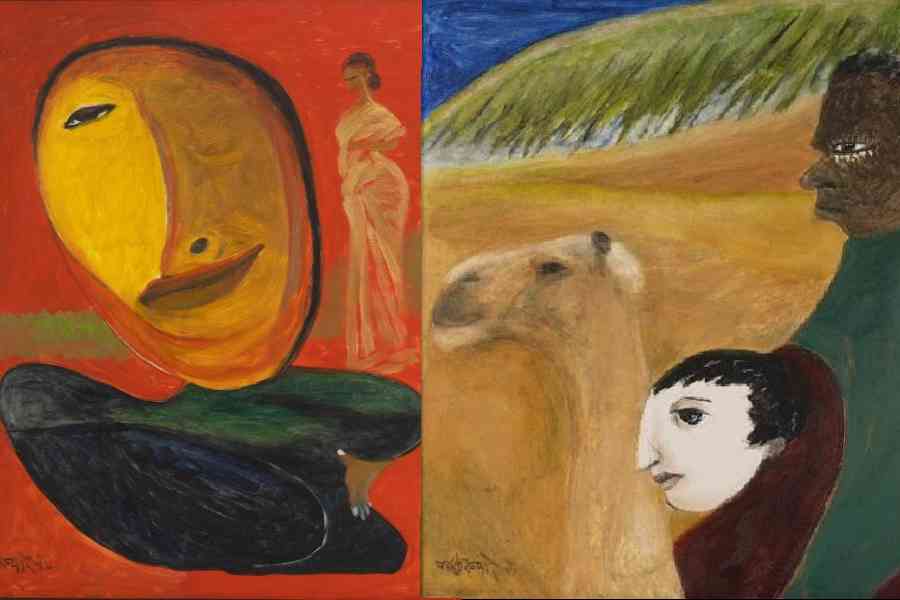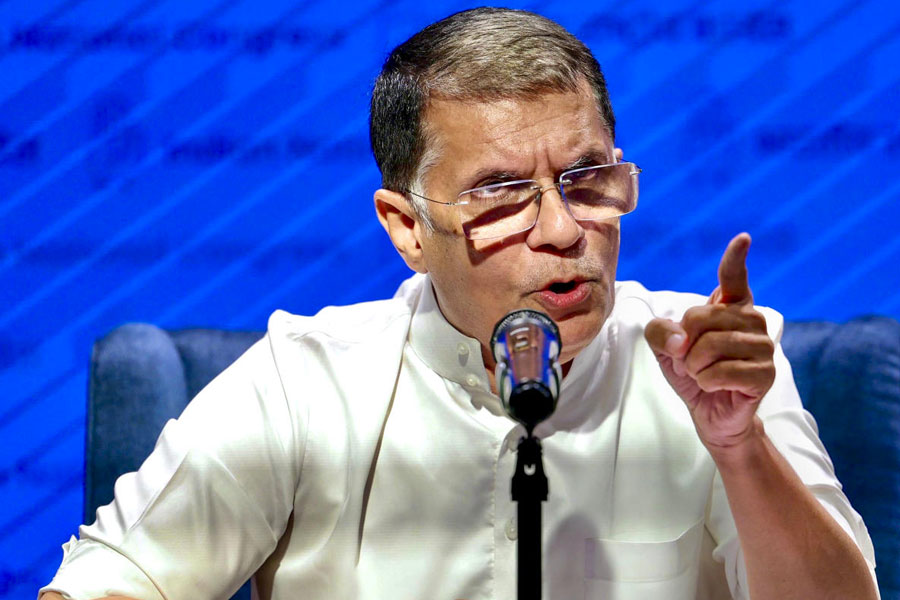The exhibition, The Hidden Moon, held in the mammoth Durbar Hall of the Victoria Memorial Hall in collaboration with the Kolkata Centre for Creativity afforded viewers a glimpse of the enigma that was Kartick Chandra Pyne (1931-2017) as it presented a wide range of his works. Like one of those rare artists who do not have much time for either the market or prevailing tastes, Pyne’s works are simple, fancy-free and idiosyncratic, occasionally verging on what can be loosely termed surrealistic.
A prolific artist, he distorted figures and objects at will, often juxtaposing the most unlikely things conceivable, creating bizarre effects — buffalo horns and peacock plumes, for instance. At times, the distortions became almost caricaturish: think of the dark man with a sour expression riding a camel along with a paper-white individual (picture, left). Pyne could have been satirising the tourism industry. But look at the composition and the colours. The heads of the dark man, the white individual and the camel form a triangle. The colours — chrome yellow, green, and chocolate brown — are solid. How does one explain this conjunction? Another absurd painting of a mango-shaped face with the shadow of a woman adjacent to it could have been the handiwork of a wilful child (picture, right). Pyne introduced folk elements in his work effortlessly. It is well nigh impossible to pigeonhole such works. Then there are the pneumatic ladies. They keep popping up with embarrassing frequency in questionable situations.
Some of Pyne’s remarkable compositions were displayed at the exhibition. One is the zebra reduced to its huge head that occupies the entire space. Its facial features are kept to a minimum, just two dots for eyes. The black stripes on a white ground are distinctive. The other is of the rickshaw-puller caught in the middle of a road. The red rectangle of the screen meant to protect passengers dominates the space. Devoid of sentimentality, it turns into a semi-abstract composition, the figure of the rickshaw-puller notwithstanding. Pyne’s imagination soared way above documentation.










